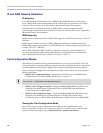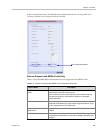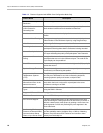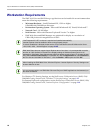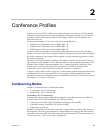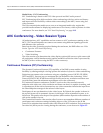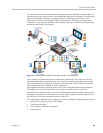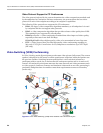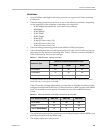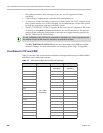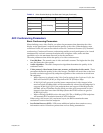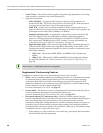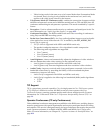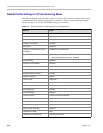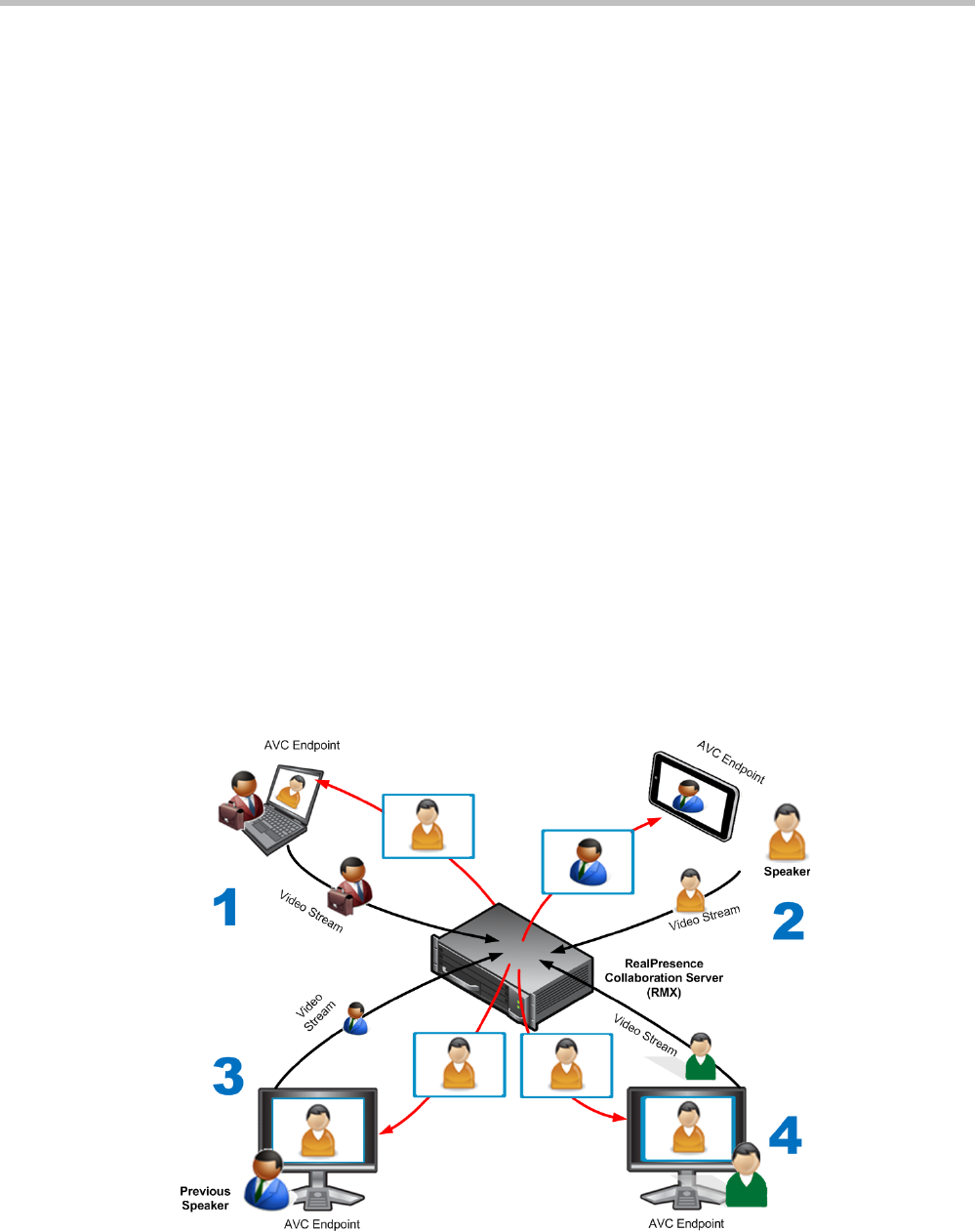
Polycom RealPresence Collaboration Server (RMX) 1500/2000/4000 Administrator’s Guide
2-4 Polycom, Inc.
Video Protocol Support in CP Conferences
The video protocol selected by the system determines the video compression standard used
by the endpoints. In Continuous Presence conferences, the system selects the best video
protocol for each of the endpoint according to he endpoint’s capabilities.
The following Video protocols are supported in CP conferences:
• H.261 - the legacy video compression algorithm mandatory to all endpoints. It is used
by endpoints that do not support other protocols.
• H.263 - a video compression algorithm that provides a better video quality than H.261.
This standard is not supported by all endpoints.
• H.264 Base Profile - a video compression standard that offers improved video quality,
especially at line rates lower than 384 Kbps.
H.264 High Profile allows higher quality video to be transmitted at lower line rates.
• RTV - a video protocol that provides high quality video conferencing capability to
Microsoft OCS (Office Communicator Server) endpoints at resolutions up to HD720p30.
(SIP only).
Video Switching (VSW) Conferencing
In Video Switching mode all participants see the same video picture (full screen). The current
speaker is displayed in full screen on all the participants' endpoints, while the speaker sees
the previous speaker. Switching between participants is voice-activated; whenever a
participant starts to speak, he or she becomes the conference speaker and is viewed on all
screens. All conference participants must use the same line rate and video parameters such
as video protocol, frame rate, annexes and interlaced video mode as no video processing is
performed. Endpoints that are unable to meet these requirements connect as Secondary
(audio only).
Figure 2-2 AVC Video Switching (VSW) video streams and Full Screen Layout



